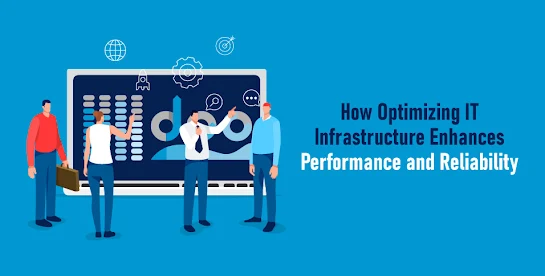Unveiling the Demand for Penetration Testers
In today's digital landscape, the demand for penetration testers is soaring. With cyber threats evolving at an alarming rate, organizations across industries are increasingly recognizing the importance of securing their digital assets. Consequently, the need for skilled professionals who can identify and mitigate security vulnerabilities through penetration testing has never been greater.
Unveiling the Top 7 Trends in the Penetration Testing Software Market
In the ever-evolving landscape of cybersecurity, penetration testing software plays a pivotal role in safeguarding digital assets against emerging threats. As organizations strive to stay ahead of cyber adversaries, understanding the latest trends in penetration testing software becomes paramount. Here, we delve into the top seven trends shaping the penetration testing software market:
1. Shift Towards Automation
Automation is revolutionizing the field of penetration testing, enabling organizations to conduct assessments more efficiently and comprehensively. Modern penetration testing software integrates automation capabilities, streamlining repetitive tasks such as vulnerability scanning, exploit identification, and report generation. By leveraging automation, organizations can enhance their cybersecurity posture while reducing manual effort and time-to-remediation.
The Benefits & Downsides of Automated Penetration Testing
Automated penetration testing offers numerous advantages, but it also comes with its own set of drawbacks. Let's explore the benefits and downsides of this approach step by step:
Efficiency and Speed:
- Benefit: Automated penetration testing tools can quickly scan large networks and systems, identifying vulnerabilities at a faster pace than manual testing.
- Downside: While speed is a plus, automated tools may overlook certain complex vulnerabilities that require human intuition to detect.
Consistency and Reproducibility:
- Benefit: Automated tools provide consistent results across multiple tests, ensuring reliability and reproducibility.
- Downside: However, they may produce false positives or false negatives if not properly configured, leading to inaccurate assessments.
Cost-Effectiveness:
- Benefit: Automated penetration testing can be more cost-effective than manual testing, as it reduces the need for extensive human resources.
- Downside: Despite the initial cost savings, organizations may incur additional expenses for tool licensing, maintenance, and training.
Scalability:
- Benefit: Automated tools are highly scalable and can be deployed to assess large and complex IT environments with minimal effort.
- Downside: Yet, they may struggle to adapt to unique or customized systems that require manual intervention for thorough testing.
Risk Reduction:
- Benefit: By continuously scanning for vulnerabilities, automated penetration testing helps organizations mitigate security risks in real time.
- Downside: However, over-reliance on automated tools may create a false sense of security, leading to neglect of manual testing and oversight of critical vulnerabilities.
Resource Requirements:
- Benefit: Automated testing requires fewer human resources, allowing security teams to focus on strategic tasks and proactive security measures.
- Downside: Yet, organizations still need skilled professionals to configure, interpret results, and validate findings, which may negate some of the resource-saving benefits.
Integration with DevOps:
- Benefit: Automated penetration testing can seamlessly integrate with DevOps pipelines, enabling continuous security testing throughout the software development lifecycle.
- Downside: However, integration challenges may arise, particularly in complex DevOps environments, leading to disruptions in the development process.
2. Emphasis on Scalability and Flexibility
As the scale and complexity of IT infrastructures continue to expand, penetration testing software must offer scalability and flexibility to meet evolving demands. Today's organizations require solutions that can adapt to dynamic environments, supporting both cloud-based and on-premises deployments. Scalable and flexible penetration testing software enables organizations to conduct assessments across diverse environments, from traditional networks to IoT and OT systems.
Optimizing IT Infrastructure Services for Business Success: A Step-by-Step Guide
In today's digital age, a robust IT infrastructure is essential for business success. Optimizing IT infrastructure services can enhance efficiency, scalability, and security, enabling organizations to stay competitive in a rapidly evolving landscape. Here's a step-by-step guide to optimizing IT infrastructure services:
1. Assess Current Infrastructure: Begin by conducting a comprehensive assessment of your existing IT infrastructure. Identify strengths, weaknesses, and areas for improvement to inform your optimization strategy.
2. Define Business Goals: Align IT infrastructure optimization efforts with your organization's overall business goals. Determine key objectives such as improving performance, reducing costs, enhancing security, or enabling scalability.
3. Develop a Strategic Plan: Based on your assessment and business goals, develop a strategic plan for optimizing IT infrastructure services. Define clear objectives, timelines, and resource requirements for each optimization initiative.
4. Upgrade Hardware and Software: Evaluate your hardware and software assets and invest in upgrades or replacements as needed. Ensure compatibility, reliability, and performance to support business operations effectively.
5. Embrace Cloud Solutions: Leverage cloud computing technologies to enhance agility, scalability, and cost-effectiveness. Migrate non-critical workloads to the cloud, adopt Software as a Service (SaaS) solutions, and explore Infrastructure as a Service (IaaS) and Platform as a Service (PaaS) offerings.
6. Implement Virtualization: Virtualization technology enables efficient resource utilization, improved flexibility, and simplified management of IT infrastructure. Implement server virtualization, network virtualization, and desktop virtualization to optimize resource allocation and reduce hardware costs.
7. Enhance Security Measures: Strengthen cybersecurity defenses to protect against evolving threats and vulnerabilities. Implement robust security protocols, access controls, encryption mechanisms, and threat detection systems to safeguard sensitive data and critical assets.
8. Automate Routine Tasks: Streamline IT operations and improve efficiency by automating routine tasks and workflows. Deploy automation tools for provisioning, monitoring, maintenance, and troubleshooting to free up valuable resources and accelerate service delivery.
9. Monitor and Optimize Performance: Continuously monitor the performance of your IT infrastructure and identify areas for optimization. Utilize monitoring tools and analytics to track key performance indicators, identify bottlenecks, and proactively address issues to maintain optimal performance.
10. Foster a Culture of Innovation: Cultivate a culture of innovation within your organization to drive continuous improvement and adaptation. Encourage collaboration, experimentation, and knowledge sharing among IT teams to identify innovative solutions and drive business success.
By following these steps and continuously refining your approach, you can optimize IT infrastructure services to support business success, enhance agility, and achieve sustainable growth in today's dynamic digital environment.
3. Integration with DevOps Processes
The integration of penetration testing into DevOps processes is gaining traction as organizations prioritize security throughout the software development lifecycle. Penetration testing software that seamlessly integrates with DevOps pipelines enables continuous security testing, identifying and addressing vulnerabilities early in the development process. By embedding security into DevOps workflows, organizations can accelerate release cycles without compromising on security.
4. Rise of AI and Machine Learning
Artificial intelligence (AI) and machine learning (ML) are reshaping the capabilities of penetration testing software, enabling more intelligent and adaptive assessments. AI-driven penetration testing tools can analyze vast amounts of data to identify patterns, detect anomalies, and prioritize vulnerabilities based on risk. Machine learning algorithms improve over time, enhancing the accuracy and efficiency of penetration testing efforts while reducing false positives.
5. Focus on Comprehensive Coverage
In today's threat landscape, organizations require penetration testing software that offers comprehensive coverage across all attack vectors and surfaces. Modern solutions go beyond traditional network-based testing to include web applications, mobile devices, APIs, and cloud services. By providing holistic coverage, penetration testing software enables organizations to identify vulnerabilities across their entire digital footprint, mitigating the risk of exploitation.
6. Shift Towards Attack Simulation
Attack simulation capabilities are becoming increasingly prevalent in penetration testing software, allowing organizations to emulate real-world cyber-attacks in a controlled environment. By simulating sophisticated attack scenarios, organizations can assess their resilience to advanced threats and validate the effectiveness of their security controls. Attack simulation exercises enable proactive risk management and help organizations prepare for cyber threats before they materialize.
7. Enhanced Reporting and Analytics
Effective reporting and analytics are essential components of penetration testing software, enabling organizations to communicate findings, prioritize remediation efforts, and track security improvements over time. Modern solutions offer customizable reporting templates, interactive dashboards, and trend analysis tools to facilitate data-driven decision-making. Enhanced reporting and analytics empower organizations to demonstrate compliance, measure ROI, and continuously improve their cybersecurity posture.
Importance of Report Writing for Pen Testers: Step by Step
Clear Communication: Reports ensure findings are communicated effectively to stakeholders, enhancing understanding of vulnerabilities.
Actionable Insights: Detailed reports provide actionable recommendations for mitigating risks and strengthening security posture.
Documentation: Reports serve as documentation of testing methodology, findings, and remediation efforts for regulatory compliance.
Client Understanding: Helps clients comprehend security risks and make informed decisions to prioritize remediation efforts.
Continuous Improvement: Enables pen testers to refine methodologies based on feedback and lessons learned from previous engagements.
Legal Protection: Offers legal protection by documenting consent, scope, and findings, reducing potential liabilities for pen testers.
Professionalism: Demonstrates professionalism and accountability, enhancing credibility and trust with clients and stakeholders.
In conclusion, the penetration testing software market is undergoing rapid evolution, driven by advancements in automation, scalability, integration, AI, comprehensive coverage, attack simulation, and reporting. Organizations that embrace these trends will be better equipped to navigate the complex cybersecurity landscape and protect their digital assets from evolving threats










.jpg)







0 Comments